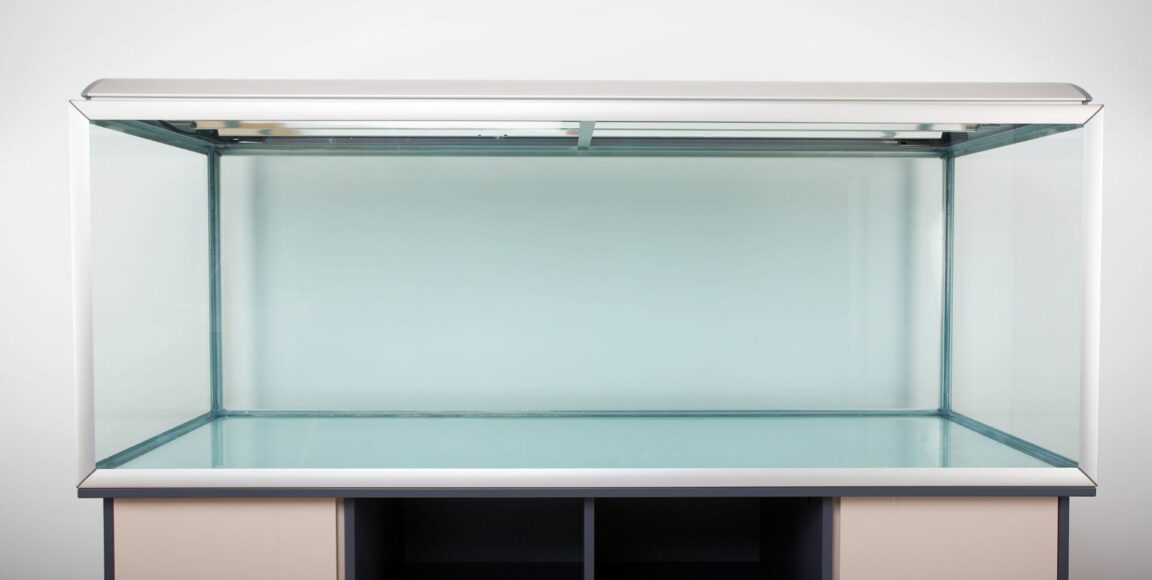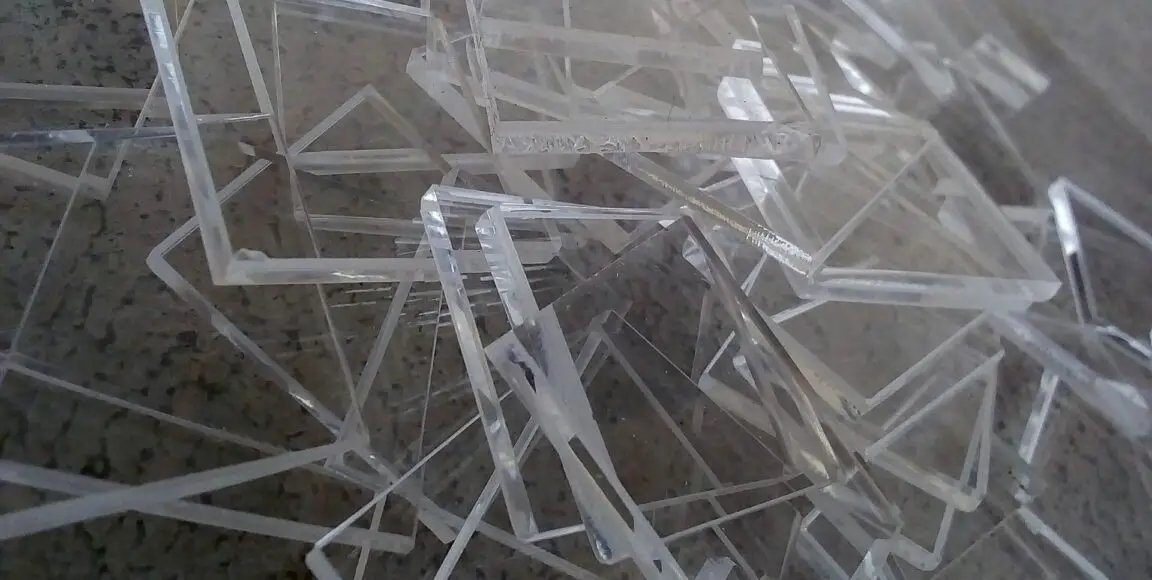Last Updated on February 22, 2023
The answer to the question, “do betta fish need a lid on their tank,” is a resounding YES.
They are curious creatures and have evolved into agile jumpers.
In the wild, betta fish are known to hop from one puddle to another in search of more suitable water levels.
Betta fish can jump out of their containers in captivity, especially when the water surface is very near the rim of the tank.
But there are other reasons why having fish tank lids is excellent for your betta fish tank.
That’s what we’ll talk about in this post, and we’ll also cover some other vital points in choosing a suitable tank lid.
Table of Contents
Do betta tanks need lids?
Having a lid on your betta fish tank will prevent your betta fish from jumping out of the tank.
This will save you from the unfortunate situations other fish keepers have experienced with open tanks.
If you have other pets like cats, it will also protect your betta fish swimming to the water surface.
So, they indeed need fish tank cover. But, just like other things, having one has its own advantages and disadvantages.
Pros of using tank lids
Helps to Maintain the Temperature
Having a lid on top of your betta fish tank will keep the temperature of your aquarium constant.
Remember that betta fish prefer tropical temperatures and can thrive in aquarium water ranging from 78°F to 80°F (25-27°C).
With an aquarium lid, you will avoid extreme temperature fluctuations and lessen the work needed by your aquarium heater.
Reduces Evaporation
Evaporation is a regular occurrence, and we can do nothing to stop it.
When this happens, it leaves behind any impurities in the water, making it more concentrated.
This can build up harmful toxins in the water that can harm your betta fish.
A fish tank cover can reduce evaporation and help maintain a healthy water environment for your betta fish.
Keeps Out Dust and Debris

Another benefit of having a tank lid for a betta fish tank is that it helps to keep out dirt.
Open aquariums can quickly accumulate dust, dirt, and other debris, affecting the water quality and potentially harming your fish.
A tank lid can help to keep out these unwanted contaminants and keep your bettas healthy.
Cons of using tank lids
Traps Heat and Humidity
A fish tank lid can also trap heat and humidity.
While this can be beneficial in some cases, it can also be detrimental if the temperature and humidity levels become too high.
High temperatures can cause stress and illness in betta fish, while high humidity levels can lead to harmful bacteria and fungi growth.
If you use a tank lid, it’s crucial to monitor the temperature and humidity levels in the tank and adjust it accordingly.
Reduces Light Transmission
Another big problem of having a lid on your betta fish tank is that it can block off light from your light source.
Some lids are manufactured with built-in light, but these usually aren’t enough to provide the light requirements of more high-tech plants.
This gives the hobbyist fewer options of plants since only the low-tech plants can survive with the stock lighting.
Limits Tank Accessibility
Finally, a tank lid can limit your access to the tank.
If you need to clean or maintain the tank, a lid can make reaching inside and performing these tasks more difficult.
This can be incredibly challenging if you have a larger tank or if the lid is heavy or difficult to remove.
Before buying any fish tank lids, accessibility and convenience are a few factors you’ve got to consider.
Types of lids for betta fish tanks
Glass lid

Glass lids are a common type of tank lid that can be purchased in the market.
They are typically made of tempered glass, making them durable and resistant to breaking.
Glass covers offer good visibility into the tank and help maintain a stable temperature and humidity level inside the tank.
However, glass lids can be heavy and difficult to remove, limiting airflow into the tank.
Plastic lid

Along with glass, plastic covers are one of the usual choices for tank water cover.
It’s lighter and more flexible than a glass lid, which makes them easier to remove and replace.
Plastic lids are also less prone to shattering than glass lids, which can be a safety concern in households with children or pets.
However, they can scratch easily, which can impact visibility and overall aesthetics.
They are also less heat-resistant than glass lids, which can be a concern if you use a heater in your tank.
Mesh lid

Mesh lids are a type of tank lid made of a fine mesh material.
They offer good airflow into the tank, which can benefit betta fish that require a lot of oxygen.
Mesh lids also help to keep out dust and debris, and they can be lightweight and easy to remove.
However, mesh lids do not offer the same temperature and humidity control level as glass or acrylic lids, and they can also be less effective at preventing evaporation.
Canopy lid
Canopy lids are a more decorative option for aquariums and are often used in larger setups or for more complex aquariums.
They can be made of wood or glass and designed to match your aquarium decor’s aesthetic.
Because they’re usually customizable, canopy lids can be more expensive than the other types of aquarium cover.
Canopy lids often include lighting fixtures, which can enhance the appearance of your aquarium and promote plant growth.
Can betta fish live in a closed container?
Betta fish need oxygen to breathe; keeping them in a sealed container for a lengthy period is not a great idea.
Transporting a betta fish from the local fish store to your home requires a closed container.
An example is aerated and sealed plastic bags with water. A betta fish will not survive in a container once they use the oxygen.
Note that most aquarium lids will not completely seal the opening of your fish tank because there will still be vents and cut-outs so that air can still enter the tank.
This will allow a continuous supply of oxygen and gas exchange to occur.
They made the lids available for aquariums so that air can still pass through small gaps while preventing your fish from escaping from the tank.
Will my betta fish jump without a lid?

There’s a huge possibility that they would do it because of their nature.
Betta fish have the instinct to jump and can be startled by sudden movements, light changes, or other environmental stressors.
I experienced it one time with my betta fish.
The temperature fluctuated because it was around the coldest month. I didn’t have an aquarium heater, so there was no way to control the condition of my tank water.
Luckily, I was able to see it before it was too late. But it could’ve been prevented had I invested in an aquarium lid.
So for future betta keepers, I recommend a covered tank over an open one.
How do you make a homemade fish tank lid?
If your tank didn’t come with a lid, then you can make a homemade fish tank lid. Measure the length and width of your fish tank and note this.
One option is to purchase a polycarbonate plastic sheet and cut it with a utility knife.
If your fish tank has its opening with only the rim of the glass exposed, you will need to consider adding a centimeter more to the measurement of the tank’s opening.
This will let the polycarbonate sheet rest on the tank’s margins.
Cut out a slot to let any air tubing and wires that need to come into your tank. If you are using a hang on back filter, then cut out an area for the filter too.
There is also a product that can support a homemade lid.
BCP 6pcs Clear Color Acrylic Aquarium Fish Tank Glass Cover Clip Support Holder,6mm by Broadway-style can support materials such as glass, acrylic sheet, or styrofoam.
- Package included: 6pcs
- Material: acrylic; Color: clear
- Clip inner width: 6mm, fit for glass 5mm to 6mm
- Product size (L x W x H): 2 x 1-1/2 x 3/4inch
- Fish tank glass clip
Prices pulled from the Amazon Product Advertising API on:
Product prices and availability are accurate as of the date/time indicated and are subject to change. Any price and availability information displayed on [relevant Amazon Site(s), as applicable] at the time of purchase will apply to the purchase of this product.
Make sure that your aquarium’s glass thickness is compatible with the size being sold.
There are other sizes available online for thicker and bigger sized tanks. Deciding what material to use is also crucial. Glass looks more aesthetic but you need to have it cut or purchase a set of glass cutting tools, acrylic sheets are not as transparent as glass, and styrofoam doesn’t look very appealing.
Another option to prevent your betta fish from jumping out of the aquarium is by using a mesh. There are DIY kits that use mesh material such as Innovative Marine DIY SafeScreen Mesh Screen Kit.
- Prevents livestock from leaving your tank | Molded lipped rails allow screen to sit neatly on the inside rim of your aquarium
- Powder coated for extra protection | Snap-In plastic ridged spline | Thin clear mesh allow for more light penetration
- Extra thick lightweight aluminum | Breakaway corners allows for cord management
- Can be used for framed and rimless aquariums | Ample protection 1/4” spacing mesh screen
- Carefully Measure Length of Rails and Cut for a Perfect Fit | Cutting Tool Not Included
Prices pulled from the Amazon Product Advertising API on:
Product prices and availability are accurate as of the date/time indicated and are subject to change. Any price and availability information displayed on [relevant Amazon Site(s), as applicable] at the time of purchase will apply to the purchase of this product.
You can bypass all the hassle of making a lid by buying ready-made aquarium covers. If it fits the measurement of your tank, then this is something you can consider.
A ready-made glass lid such as the Aqueon Versa Hinged Glass Aquarium Top looks sleek and clean but it doesn’t come with light fixtures.
- Our glass tops are perfect for reducing evaporation and keeping fish from jumping out of your aquarium
- Each Versa-Top features a clear vinyl back strip that can be easily cut to custom fit your accessories
- Special store use Versa-Tops feature heavy 3/16 glass with notched Corners for air lines and larger glass sections that allow easier netting of fish
- Actual Glass top measures 44.5-Inch X 16.5-Inch designed to fit on top of an aquarium up to 48 X 18 inches
Prices pulled from the Amazon Product Advertising API on:
Product prices and availability are accurate as of the date/time indicated and are subject to change. Any price and availability information displayed on [relevant Amazon Site(s), as applicable] at the time of purchase will apply to the purchase of this product.
This is a superb choice if you have purchased a separate light fixture for your tank.
An example of a hood available online would be the Tetra LED Aquarium Hood.
- aquarium HOOD WITH LEDS: Low-profile, hinged hood houses white LED lights that create a natural underwater shimmer effect.
- ENERGY EFFICIENT: Built-in LEDs – no bulbs to replace.
- FILTER COMPATIBLE: Cutouts in the back of the hood can accommodate a variety of filters.
- RANGE OF SIZES: Tetra LED Hoods are available in multiple sizes to accommodate most rectangular tanks.
- SIZE: Measures 24 inches wide by 12 inches deep.
Prices pulled from the Amazon Product Advertising API on:
Product prices and availability are accurate as of the date/time indicated and are subject to change. Any price and availability information displayed on [relevant Amazon Site(s), as applicable] at the time of purchase will apply to the purchase of this product.
This comes with light fixtures installed and will prevent your betta from jumping out. It has cut-outs to let airline tubes and wires to pass through into the tank. The light included with the hood can support low-tech plants that do not require too bright lights.
There are plenty of ready-made aquarium kits that come with a cover. Examples are Aqueon’s 10 Gallon Fish Tank Aquarium LED Kit which comes with a hood with light inside.
- Low profile full hood contains vibrant cool white LED lighting to bring your aquatic environment to life
- QuietFlow 10 LED PRO power filter has a red LED light that flashes to indicate when it’s time to change the cartridge – no more guessing!
- Preset heater will keep your aquarium temperature at a constant 78 degrees, appropriate for most tropical fish
- Complete setup guide included
- Complete aquarium kit includes: 10 gallon glass aquarium, low profile LED full hood, QuietFlow 10 LED PRO power filter with medium cartridge, 50W preset heater, premium fish food, water conditioner, fish net, stick-on thermometer
Prices pulled from the Amazon Product Advertising API on:
Product prices and availability are accurate as of the date/time indicated and are subject to change. Any price and availability information displayed on [relevant Amazon Site(s), as applicable] at the time of purchase will apply to the purchase of this product.
Fluval’s Spec V 5 Gallon Aquarium Kit also has a glass cover included.
- 5 gallon Nano aquarium
- Etched glass tank with aluminum trim
- Powerful 37 LED lighting system
- Includes foam block, activated carbon and BioMax bio rings
- Size: 17.2 x 10.6 x 6.3 inch
Prices pulled from the Amazon Product Advertising API on:
Product prices and availability are accurate as of the date/time indicated and are subject to change. Any price and availability information displayed on [relevant Amazon Site(s), as applicable] at the time of purchase will apply to the purchase of this product.
Do fish tank need lids?
If you have other types of fish that don’t have the instinct to jump out of the water, buying a tank lid may not be necessary, but still recommended.
Tank lids will be beneficial even for non-betta fish keepers in ensuring good water quality.
Conclusion
Having a lid on a betta or other fish tanks can provide many benefits to ensure the health and safety of your pets.
Betta fish are known for being skilled jumpers, so a lid can prevent them from jumping out of the tank and becoming injured or dying.
In addition, a tank lid can help regulate the tank’s temperature, reduce evaporation, and keep out dirt, all of which can contribute to a healthy and thriving aquarium environment.
While keeping betta fish without a lid may be possible, it is important to consider the potential risks. And it’s really better to have one and avoid any future loss.






